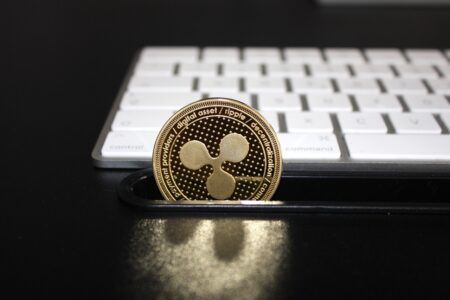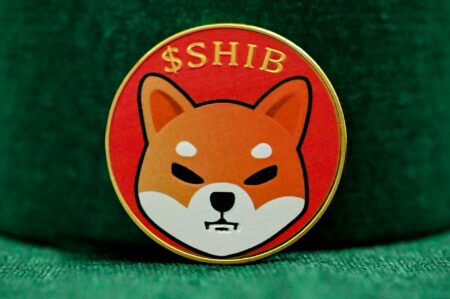Recently, highly popular pseudonymous crypto analyst and influencer “Coin Bureau” explained why he is bullish on algorithmic stablecoin platform Terra ($LUNA).
What Is Terra ($LUNA)?
The official Terra documentation has this to say about the Terra Protocol:
“The Terra protocol is the leading decentralized and open-source public blockchain protocol for algorithmic stablecoins. Using a combination of open market arbitrage incentives and decentralized Oracle voting, the Terra protocol creates stablecoins that consistently track the price of any fiat currency.
“Users can spend, save, trade, or exchange Terra stablecoins instantly, all on the Terra blockchain. Luna provides its holders with staking rewards and governance power. The Terra ecosystem is a quickly expanding network of decentralized applications, creating a stable demand for Terra and increasing the price of Luna.“
As for the protocol’s two main tokens, it says:
- “Terra: Stablecoins that track the price of fiat currencies. Users mint new Terra by burning Luna. Stablecoins are named for their fiat counterparts. For example, the base Terra stablecoin tracks the price of the IMF’s SDR, named TerraSDR, or SDT. Other stablecoin denominations include TerraUSD or UST, and TerraKRW or KRT. All Terra denominations exist in the same pool.“
- “Luna: The Terra protocol’s native staking token that absorbs the price volatility of Terra. Luna is used for governance and in mining. Users stake Luna to validators who record and verify transactions on the blockchain in exchange for rewards from transaction fees. The more Terra is used, the more Luna is worth.“
And this is Binance Academy’s brief explanation of what Terra is:
“Terra is a blockchain network built using Cosmos SDK specializing in stablecoin creation. Rather than use fiat or over-collateralized crypto as reserves, each Terra stablecoin is convertible into the network’s native token, LUNA.
“LUNA allows holders to pay network fees, participate in governance, stake in the Tendermint Delegated Proof of Stake consensus mechanism, and peg stablecoins.
“To peg a stablecoin like TerraUSD (UST), a USD value of LUNA is convertible at a 1:1 ratio with UST tokens. If UST’s price is, for example, at $0.98, arbitrageurs swap 1 UST for $1 of USD and make 2 cents. This mechanism increases UST demand and also reduces its supply as the UST is burned. The stablecoin then returns to its peg.
“When UST is above $1, say at $1.02, arbitrageurs convert $1 of LUNA into 1 UST and make 2 cents. The supply of UST increases, and demand for UST also decreases, bringing the price back to peg.
“Apart from reducing stablecoin volatility, validators and delegators stake LUNA for rewards. These two actors play an essential part in keeping the network secure and confirming transactions.
“You can purchase LUNA via Binance and then store it, stake it, and participate in governance with Terra Station, the official wallet and dashboard for the Terra blockchain network.“
Coin Bureau’s Latest Analysis of $LUNA and $UST
In a YouTube live stream on February 4, this is what Coin Bureau said about Terra:
“I am thinking of picking up some $LUNA. The Terra ecosystem itself is really exciting. There’s a lot of total value locked in Terra and, of course, the main thing obviously about Terra’s decentralized stablecoin protocol is that currently demand for Terra’s dollar stablecoin $UST is going through the roof because decentralized stablecoins are so so important.
“And I think they’re gonna be a really big part of crypto for well for the foreseeable future. Yeah, like I said before, there are other stablecoin options out there and I would be wary of holding all your stablecoins reserves perhaps in one particular coin, but obviously the thing to bear in mind with things like Tether — and USDC as well — is that they are centralized. They do have centralized controlling entities behind them that can and have restricted access to people’s holdings of those coins for various reasons, but that can’t happen with $UST. So that’s one of the reasons that I’m so bullish on $LUNA.
“And now let’s face it: I wish I’d kind of got into Luna a lot sooner, but one of the things that did concern me around $LUNA was that that there wasn’t much transparency. It was difficult to see who was holding, who the big $LUNA holders were, and after a lot of digging, Dan — one of our researchers — and I did some digging together, and we did eventually manage to to dig something up.
“And it turns out that quite a hefty proportion of $LUNA is being held by Terraform Labs, the company behind Terra, which is not ideal, but then I’m confident that they’re using $LUNA to fund the ecosystem, right? So, ideally, Terraform Labs wouldn’t be holding such a large proportion of $LUNA, and so that reason I’m not going to make a really really big buy just yet, but I am bullish on $LUNA. I do think it’s got a ton of potential. I’m really really taken with $UST.“
And if you want a more comprehensive look at Terra and its ecoystem, it is worth checking out the video below, which Coin Bureau released on February 1:
Other Interesting Terra News
Yesterday (February 9), it was announced that the Terra Community Trust (TCT) had “entered a 5-year, $38.15M partnership with the Washington Nationals MLB franchise to promote Terra across various parts of its home venue and TV network and make efforts to implement UST as an accepted currency in venue transactions.”
Terraform Labs Co-Founder Do Kwon called this “a historic milestone of a DAO deploying marketing dollars to grow its own community – a resounding proof that communities can self-organize for the common good.”
Disclaimer
The views and opinions expressed by the author, or any people mentioned in this article, are for informational purposes only, and they do not constitute financial, investment, or other advice. Investing in or trading cryptoassets comes with a risk of financial loss.
Image Credit
Featured Image by “rkarkowski” via Pixabay








